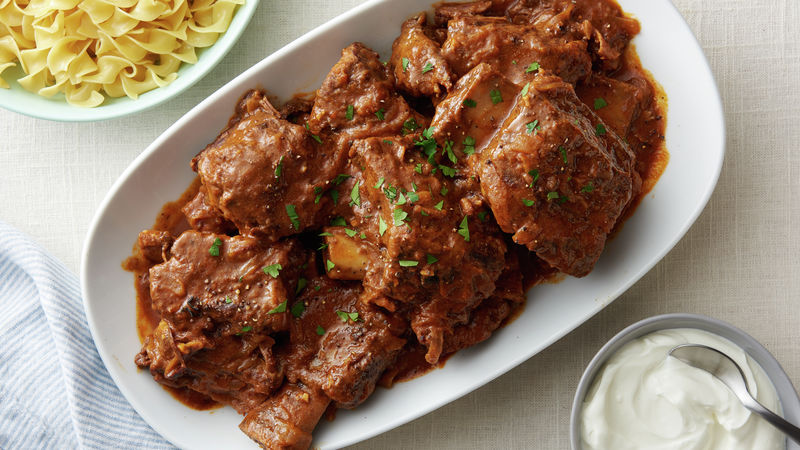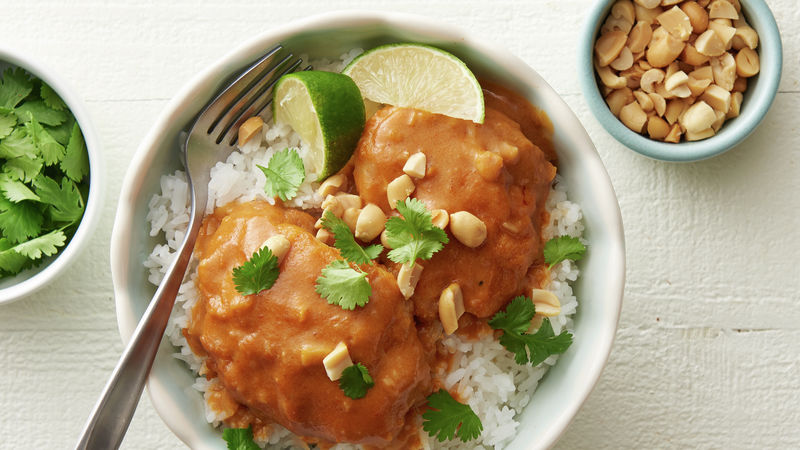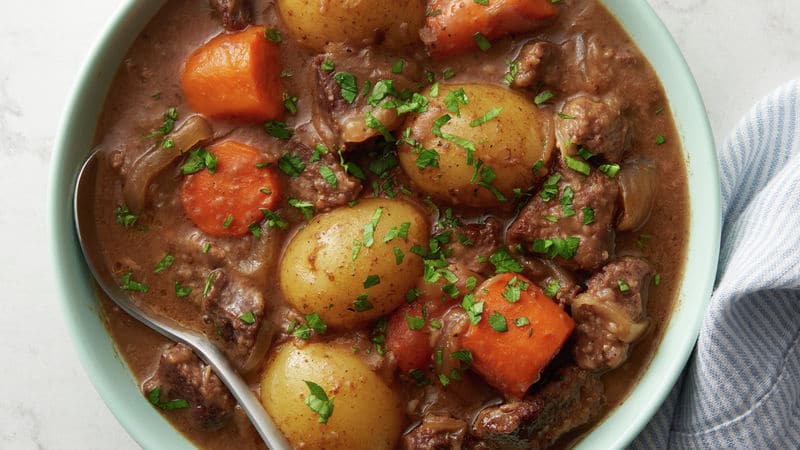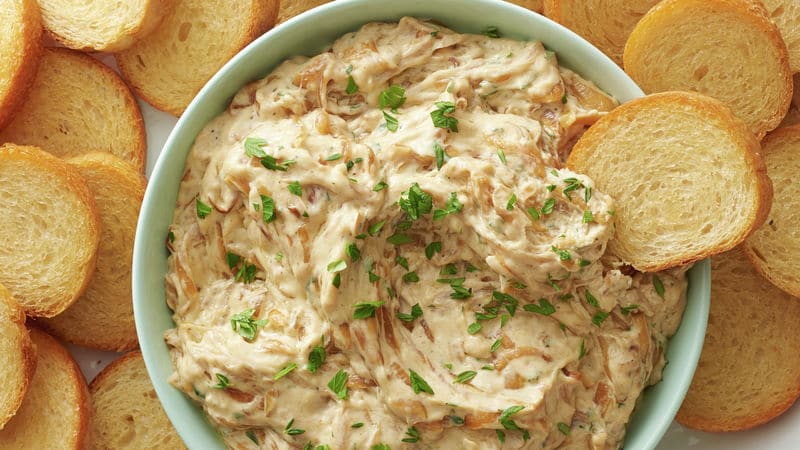(function() {
document.addEventListener('DOMContentLoaded', function() {
var componentMetadata = JSON.parse('\x7b\x22componentName\x22\x3a\x22Breadcrumb_34c710d8-57a0-4897-a63a-f65c799a50d3\x22,\x22deferOptions\x22\x3a\x7b\x22deferComponent\x22\x3afalse,\x22deferType\x22\x3a\x22None\x22,\x22deferId\x22\x3a\x22ra3d4cf3f9dc8414eb0e6ea9d8e260b34\x22,\x22deferredContainerId\x22\x3a\x22\x2fcommonBreadcrumb\x22,\x22deferredContainerView\x22\x3anull\x7d,\x22viewName\x22\x3a\x22Breadcrumb\x22\x7d');
var configuration = {"links":[{"url":"/","label":"Home"},{"url":"/how-to","label":"How-To"},{"url":"/how-to/the-best-and-worst-foods-to-make-in-your-slow-cooker","label":"The Best (and Worst) Foods to Make in Your Slow Cooker"}]};
var moduleName = 'breadcrumb';
var isVueModule = true;
GeneralMills.PandoSites.RegisterControlInstance(moduleName, configuration, componentMetadata, isVueModule)
});
})();
(function() {
document.addEventListener('DOMContentLoaded', function() {
var componentMetadata = JSON.parse('\x7b\x22componentName\x22\x3a\x22ActionToolbar_59e5fa31-dc57-46ea-93d1-265650a760f0\x22,\x22deferOptions\x22\x3a\x7b\x22deferComponent\x22\x3atrue,\x22deferType\x22\x3a\x22OnDemand\x22,\x22deferId\x22\x3a\x22r63f5e669cc0d4aa6b7b6041fb0d80ac7\x22,\x22deferredContainerId\x22\x3a\x22\x2ffloatingActionToolbar\x2ffloatingActionToolbar_interop\x22,\x22deferredContainerView\x22\x3a\x22InteropDeferWrapper\x22\x7d,\x22viewName\x22\x3a\x22ActionToolbar\x22\x7d');
var configuration = {"contentId":"34c710d8-57a0-4897-a63a-f65c799a50d3","toolbarSettings":{"id":"59e5fa31-dc57-46ea-93d1-265650a760f0","regAction":"FAVORITE","eSourceCode":11275,"namePassedToEvents":"ArticleStandardLongFormToolbar","buttons":[{"addFavoriteErrorMessage":"Sorry, something went wrong. Please save again.","removeFavoriteErrorMessage":"Error occurred while removing from favorites","regAction":"FAVORITE","eSourceCode":11275,"isCurrentUserAnonymous":false,"isFavoriteItem":false,"id":"16a29701-2b75-4d9a-aa9c-860376da50d7","allowedForAnonymousUsers":false,"type":"Favorite","displayName":"Save","toggleDisplayName":"Saved","namePassedToEvents":"Favorite","cssClassName":"atButtonFavorite","privacyOptOutMessage":"\u003cdiv class=\u0027privacyMessage\u0027\u003e\n\u003ch3\u003eThis feature is not available with your current cookie settings.\u003c/h3\u003e\n\u003cp\u003eYou can \u003ca href=\u0027#\u0027 data-show-preference-center=\u00271\u0027\u003eupdate your privacy settings\u003c/a\u003e to enable this content. Please enable “Functional Cookies” to use this feature.\u003c/p\u003e\n\u003c/div\u003e","showPrivacyOptOutMessage":false},{"providerName":"pinterest","providerNamePassedToEvents":"Pinterest","shareUrlFormat":"//pinterest.com/pin/create/link/?url={0}","id":"c18cf08e-e436-4cd0-a180-1bafb15369a6","allowedForAnonymousUsers":true,"type":"Social","displayName":"Pinterest","toggleDisplayName":"","namePassedToEvents":"Pinterest","cssClassName":"atButtonPinterest","privacyOptOutMessage":"\u003cdiv class=\u0027privacyMessage\u0027\u003e\n\u003ch3\u003eThis feature is not available with your current cookie settings.\u003c/h3\u003e\n\u003cp\u003eYou can \u003ca href=\u0027#\u0027 data-show-preference-center=\u00271\u0027\u003eupdate your privacy settings\u003c/a\u003e to enable this content. Please enable “Functional Cookies” to use this feature.\u003c/p\u003e\n\u003c/div\u003e","showPrivacyOptOutMessage":false},{"templateId":"13bdd311-4300-4fb8-9d78-9cbaf98f5578","dialogHeading":"Email Article","emailCode":"BC_ContentEmail","dialogSettings":{"cancelButtonText":"Cancel","copyToSenderLabel":"Send a Copy to Myself","emailAddressesLabel":"* Email Address(es)","emailInstructionText":"Separate email addresses with commas","fromText":"From:","privacyPolicyText":"\u003cp\u003e\u0026copy;2025 General Mills, Inc. All Rights Reserved. This information will only be used to send an email to your friend(s) and will not be saved. Please read our \u003ca rel=\u0022noopener noreferrer\u0022 rel=\u0022noopener noreferrer\u0022 href=\u0022http://www.generalmills.com/company/privacy-policies/privacy-policy-us\u0022 target=\u0022_blank\u0022 shape=\u0022rect\u0022\u003ePrivacy Policy\u003c/a\u003e.\u003c/p\u003e","requiredFieldText":"* Required","sendButtonText":"Send","senderEmailAddressLabel":"* Your Email Address","senderFirstNameLabel":"* Your First Name","sendToText":"Send To:"},"id":"be9422a3-85a8-4c31-86f5-e171255bb89d","allowedForAnonymousUsers":true,"type":"Email","displayName":"Email","toggleDisplayName":"","namePassedToEvents":"Email","cssClassName":"atButtonEmail","privacyOptOutMessage":"\u003cdiv class=\u0027privacyMessage\u0027\u003e\n\u003ch3\u003eThis feature is not available with your current cookie settings.\u003c/h3\u003e\n\u003cp\u003eYou can \u003ca href=\u0027#\u0027 data-show-preference-center=\u00271\u0027\u003eupdate your privacy settings\u003c/a\u003e to enable this content. Please enable “Functional Cookies” to use this feature.\u003c/p\u003e\n\u003c/div\u003e","showPrivacyOptOutMessage":false},{"providerName":"facebook","providerNamePassedToEvents":"Facebook","shareUrlFormat":"//facebook.com/sharer/sharer.php?u={0}","id":"6c3f442d-6ffe-460f-8360-b02b122d326c","allowedForAnonymousUsers":true,"type":"Social","displayName":"Facebook","toggleDisplayName":"","namePassedToEvents":"Facebook","cssClassName":"atButtonFacebook","privacyOptOutMessage":"\u003cdiv class=\u0027privacyMessage\u0027\u003e\n\u003ch3\u003eThis feature is not available with your current cookie settings.\u003c/h3\u003e\n\u003cp\u003eYou can \u003ca href=\u0027#\u0027 data-show-preference-center=\u00271\u0027\u003eupdate your privacy settings\u003c/a\u003e to enable this content. Please enable “Functional Cookies” to use this feature.\u003c/p\u003e\n\u003c/div\u003e","showPrivacyOptOutMessage":false},{"layoutParameter":"p%3d1","id":"de022929-4416-4bc9-ab3c-ae5711d562bf","allowedForAnonymousUsers":true,"type":"Print","displayName":"Print","toggleDisplayName":"","namePassedToEvents":"Print","cssClassName":"atButtonPrint","privacyOptOutMessage":"\u003cdiv class=\u0027privacyMessage\u0027\u003e\n\u003ch3\u003eThis feature is not available with your current cookie settings.\u003c/h3\u003e\n\u003cp\u003eYou can \u003ca href=\u0027#\u0027 data-show-preference-center=\u00271\u0027\u003eupdate your privacy settings\u003c/a\u003e to enable this content. Please enable “Functional Cookies” to use this feature.\u003c/p\u003e\n\u003c/div\u003e","showPrivacyOptOutMessage":false}],"isSticky":true},"userSettings":{"isCurrentUserAnonymous":true,"isFavoriteItem":false,"isAnonymousUserWithFavorites":false},"pageAttributes":{"url":"https%3a%2f%2fwww.bettycrocker.com%2fhow-to%2fthe-best-and-worst-foods-to-make-in-your-slow-cooker","contentId":"34c710d8-57a0-4897-a63a-f65c799a50d3"},"recaptchaPublicKey":"6LfU_icUAAAAALSqSjRg5hqZwbPr1b8k-_80a_S_"};
var moduleName = 'actionToolbar';
var isVueModule = true;
GeneralMills.PandoSites.RegisterControlInstance(moduleName, configuration, componentMetadata, isVueModule)
});
})();
The Best Foods to Cook in Your Slow Cooker
The slow cooker shines when you’re too busy to stand over the stove or to watch the oven. It maintains a steady temperature over an extended period of time and requires little to no fussing in between. Combine that convenience with the right recipes—those that taste best after cooking slowly in a moist environment—and you’ve got the perfect tool to turn out stellar meals. These are the no-fail foods that turn out best in the slow cooker:

1. Long-Cooking Cuts of Meat
Tough cuts of meat that turn out meltingly tender when cooked low and slow are made for this appliance. Since the slow cooker stays closed during cooking, the steam that’s created gets trapped, turns into condensation and drips back down on the food, essentially basting your meat for you. The only trick is to leave the lid on. We know how tempting it can be, but when you lift the lid to take a peek, the heat needed to properly cook dinner will escape—so please refrain! Here are some great long-cooking cuts to try in your slow cooker:
- Beef: chuck roast, brisket, stew meat and short ribs
- Pork: pork shoulder, pork butt, pork ribs, country-style ribs, ham
One note about large cuts of meat: Browning before slow cooking will lead to better results. While we understand there’s not always time, if you’ve invested in an expensive piece of meat and really want it to turn out well, we highly recommend taking this step. And here’s something you might not realize, deglazing the skillet—adding water, vinegar, wine, broth or another liquid to the hot pan and scraping up the browned bits—cleans up the pan and that deeply flavorful liquid can go right into the slow cooker with the meat. Give it a try in this recipe for Slow-Cooker Short-Rib Goulash.

2. Whole Chicken & Chicken Thighs
When cooking chicken in the slow cooker, it’s important to pick the right cut, which means either the whole chicken or chicken thighs. Both have enough fat to withstand a longer cook time without drying out, which means you can turn out succulent “rotisserie” chickens and tender thighs. Cooking chicken this way is easy, hands off, won’t make a mess in your oven and won’t heat up your house during the hot summer months, so it’s an all-around win.
Note: Most slow-cooker chicken recipes will be in the 3 to 4 hour range and rarely longer than 6 hours. While it might seem like an odd time range, if you’re used to starting your slow cooker in the morning and letting the meal cook all day, we’ve found slow cooker recipes that cook for a couple hours are great on busy weekend afternoons or weeknight evenings. They allow us to start dinner before heading out to take care of pick-ups and errands, attending sports games or meetings and doing whatever else is on the family schedule. And on the nights when dinner together just isn’t possible, the food is hot and waiting for whenever people arrive home.

3. Soups, Stews & Chilis
Soups, stews and chilis are tailor-made for slow cooking. Since moisture can’t evaporate, there’s no concern they’ll reduce too much, and flavors have a chance to develop and blend during the long cook time. See for yourself with our recipe for Slow-Cooker Irish Stout Beef Stew.
Note: One of the best ways to make your slow-cooker soups, stews and chilis even better is by adding a garnish. Think about things that will add a flavor or texture contrast and don’t overlook the ingredients that need using up—that bunch of herbs, the forgotten nub of cheese, etc. For all our tips on garnishes, check out Betty’s 5 Slow-Cooker Commandments.

4. Dips
No more sad dip! You know the stuff that’s been sitting out for too long, it’s dry and sometimes even has an unattractive skin on top. You can keep your dip hot and dunkable when you serve it in a slow cooker set to Keep Warm. Actually, you could use your slow cooker to keep any number of dishes warm, so remember that next time you’re hosting. But don’t wait for your next party to try this irresistible recipe for Slow-Cooker Caramelized Onion Dip.
Now that we’ve covered the best foods for the slow cooker, it’s time to take a look at the worst foods.
Worst Foods to Cook in the Slow Cooker
First a disclaimer: You can cook the foods below in the slow cooker. You’ll even find slow-cooker recipes for some of these foods on our site. BUT, and this is a big but, these foods will simply not be as good as they could be if you cooked them another way. Sometimes, cooking in the slow cooker rather than in a skillet, Dutch oven or conventional oven is like swatting a fly with a hammer, when a rolled-up newspaper would do just fine. You don’t need the power of the slow cooker to make these foods delicious. Further, when compared to the “Bests” above, recipes for these foods are landmines and are ripe for error and subpar results, which is why we consider them the “Worst” foods for slow cooking.
Lean Meats
These meats just don’t have enough fat to withstand a long slow cook. They also cook quickly. If it’s convenience you’re after—and we 100 percent get that—you might be better served with the cooking methods recommended below.
- Steak needs a nice sear to taste its best, so stick with your skillet or grill.
- Tenderloin can easily dry out in the oven, so there’s absolutely no reason to subject it to slow cooking.
- Pork chops cook up beautifully and with very little effort in a skillet.
- Chicken breast can dry out and turn rubbery, so cook them simply on the stovetop or in the oven.
Baked Goods
The browning that makes baked goods so delicious, simply won’t happen in the slow cooker because it’s a moist, sealed environment. It’s also likely that baking in your slow cooker will take longer than using your oven.
- Cake can be made in the slow cooker, but we’d argue it really only makes sense in specific circumstances—when you don’t have air conditioning and need to bake a birthday cake in 110°F weather, or when you’re camped out in an RV or when the power goes out and you’re using a generator. The rest of the time, your oven does a great job.
- Pizza doesn’t take long to cook, unless you put it in the slow cooker. If that helps you out of a weeknight dinner jam, that’s great. But you’ll never go wrong baking (or even grilling) your pizza.
Pasta and Grains
Texture is really important when you’re cooking pasta or Arborio rice. Both taste best when they’re soft, but not gummy, and pleasantly chewy—what the Italians call “al dente.” It’s easier to achieve this perfect state when you can watch the food closely, stir, adjust the heat and generally be more involved in the cooking.
- Risotto is a labor of love. Constant stovetop stirring isn’t for everyone, but it might result in a better dish. When making risotto in the slow cooker, you won’t have to stir. You will have to follow directions closely to avoid making a gummy mess and/or burning the bottom.
- Pasta can be done well—i.e. use the slow cooker to make your sauce, then either stir in the pasta at the very end or cook it on the stovetop, so you’re really using the slow cooker to stew up a flavorful sauce. The other way, the way we wouldn’t recommend, involves dumping all the ingredients into the slow cooker, and letting it all cook for hours on end. In our opinion, this is just no way to treat a box of pasta. So, make sure your recipe follows the first method, and remember there’s nothing wrong with boiling pasta on the stovetop.
When in Doubt, Ask Yourself the Following:
- Is the slow cooker improving the flavor of the dish? For example, slow cooking helps break down the tough muscle proteins and render the fat in a long-cooking cut of meat, so it turns out meltingly tender and flavorful. On the other hand, if it’s going to stop your cake from browning—skip the slow cooker.
- Are the ingredients well suited to the slow cooker? Some ingredients get weird in the slow cooker—chicken breasts dry out and dairy can curdle. Ingredients that need to breathe and burn off through evaporation just don’t have the chance. The steamy, sealed environment of the slow cooker prevents browning and it can concentrate strong flavors, such as ginger, garlic and herbs, to the point where they overpower the whole dish. These ingredients will fare better if sautéed before slow cooking.
- Am I just trying use the slow cooker, because I need the convenience? We know exactly where you’re coming from, and we’ve got the recipes that make life easier and still turn out delicious. Get started with our all-day slow-cooker recipes and don’t forget about slow-cooker soups, stews and chilis. Pulled pork, beef chuck roast and the rest of the long-cooking cuts of meat will turn out beautifully too.
So now that you know what to avoid and what to lean into—you’re on your way to the best-ever slow-cooker meals! Want to know even more on this subject? Check out Betty’s 5 Slow-Cooker Commandments.
(function() {
document.addEventListener('DOMContentLoaded', function() {
var componentMetadata = JSON.parse('\x7b\x22componentName\x22\x3a\x22NewsletterCTA_b9911a56-3a0d-4b1c-8521-df6c10ce048a\x22,\x22deferOptions\x22\x3a\x7b\x22deferComponent\x22\x3atrue,\x22deferType\x22\x3a\x22OnDemand\x22,\x22deferId\x22\x3a\x22r264f5edddff34479b84f3b4d1322cdeb\x22,\x22deferredContainerId\x22\x3a\x22\x2fprimaryColumn\x2finteropInlineNewsletterCta\x22,\x22deferredContainerView\x22\x3a\x22InteropDeferWrapper\x22\x7d,\x22viewName\x22\x3a\x22NewsletterCTA\x22\x7d');
var configuration = {"unsubscribedNewsletters":[{"listId":"1e34a555-89d1-45f0-8f07-b3ae6b01c03c","thumbnailImageUrl":"/-/media/GMI/Core-Sites/BC/Images/Shared/myaccount/newsletters/BC_Thumb157x157.png?sc_lang=en","previewUrl":"https://morpheus3.idpk.net/email_sends/9111/preview","name":"Betty\u0027s Email","isPromo":false}],"settings":{"anonymousCopy":" Baking happiness, one recipe at a time!","anonymousDescriptionCopy":"Access thousands of tested recipes, perfect for everyday meals and special celebrations. Made with love, from our kitchens to yours.","anonymousThankYouCopy":"\u003cp\u003eThanks! Your first email is on its way.\u003c/p\u003e\n","anonymousThankYouDescriptionCopy":"\u003cp\u003e\u003cspan\u003eNow that you\u0026rsquo;re signed up, create an account on BettyCrocker.com to save your favorite recipes, learn more about special promotions and get inspired through Betty\u0026rsquo;s expert tips.\u003c/span\u003e\u003c/p\u003e","anonymousButtonText":"Sign Me Up for Emails","anonymousEmailInvalidErrorText":"Please enter a valid email address.","anonymousSubscribeErrorText":"We encountered an error while signing you up. Please try again.","anonymousEmailAddressPlaceholderText":"Enter your email address","anonymousEmailAddressLabel":"Email Address","anonymousLegalCopy":"By signing up, you accept our\u0026nbsp;\u003ca rel=\u0022noopener noreferrer\u0022 href=\u0022https://www.generalmills.com/privacy-security/us-english-privacy-policy\u0022 target=\u0022_blank\u0022\u003e\u003cspan style=\u0022text-decoration: underline;\u0022\u003ePrivacy Policy\u003c/span\u003e\u003c/a\u003e\u0026nbsp;and agree that your information may be used across our\u0026nbsp;\u003ca rel=\u0022noopener noreferrer\u0022 href=\u0022https://www.generalmills.com/food-we-make/brands\u0022 target=\u0022_blank\u0022\u003e\u003cspan style=\u0022text-decoration: underline;\u0022\u003efamily of brands\u003c/span\u003e.\u003c/a\u003e","requiredFieldText":"","backgroundColor":"#E60000","accentColor":"","registrationUrl":"/user-profile/register?RegAction=SUBSCRIBERUPGRADE\u0026esrc=11275\u0026returnUrl=%2fhow-to%2fthe-best-and-worst-foods-to-make-in-your-slow-cooker","registrationLinkText":"Join free!","enableExpandedFields":false,"hideForSessionCookieExpiration":0,"ctaType":"StandardAnonymous","location":"Inline","userState":"Anonymous","sourceCodeOverride":0}};
var moduleName = 'newsletterCta';
var isVueModule = true;
GeneralMills.PandoSites.RegisterControlInstance(moduleName, configuration, componentMetadata, isVueModule)
});
})();